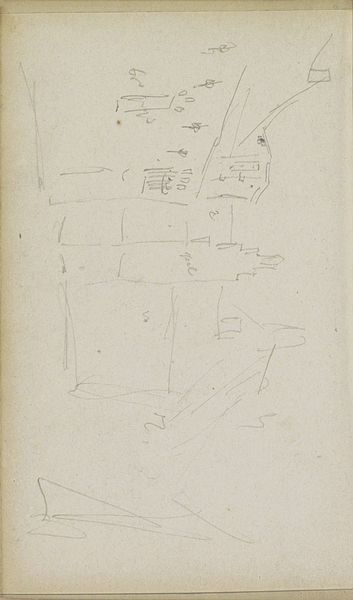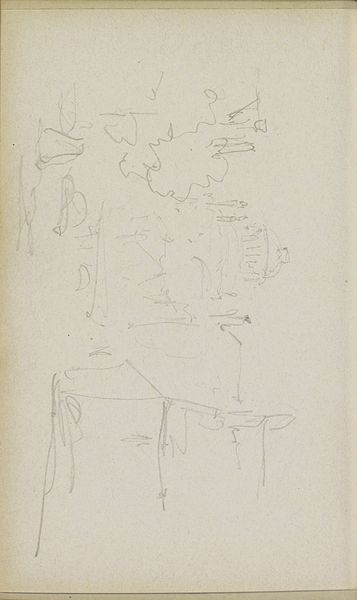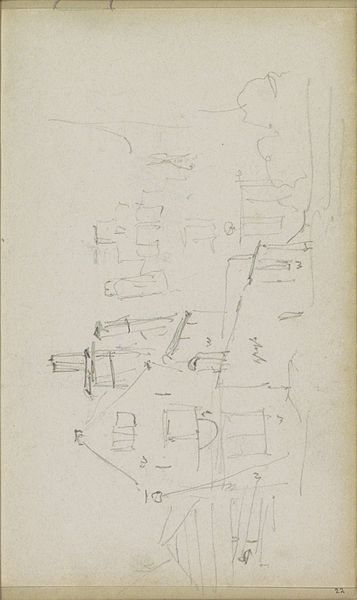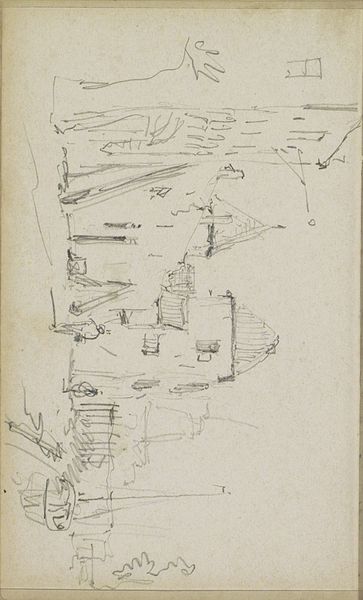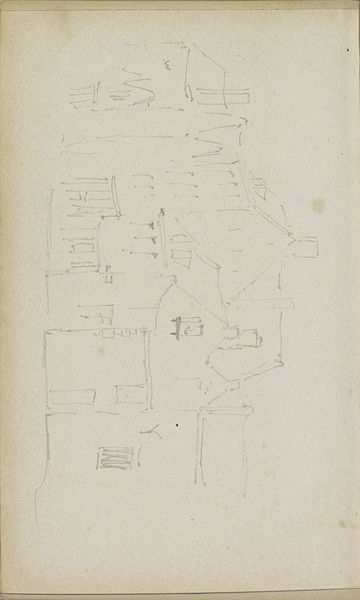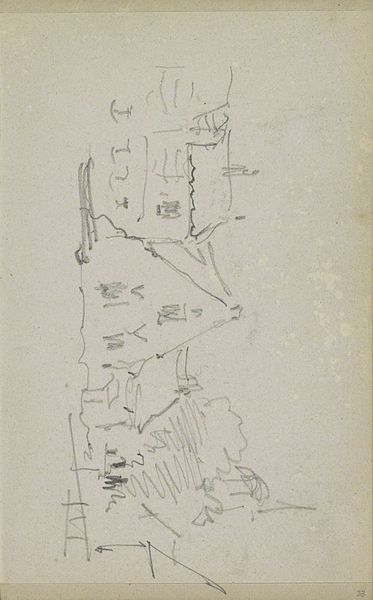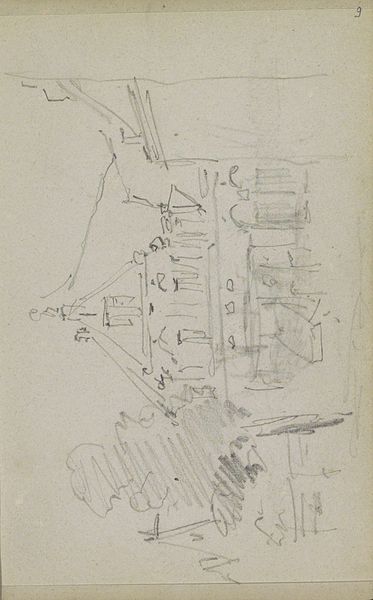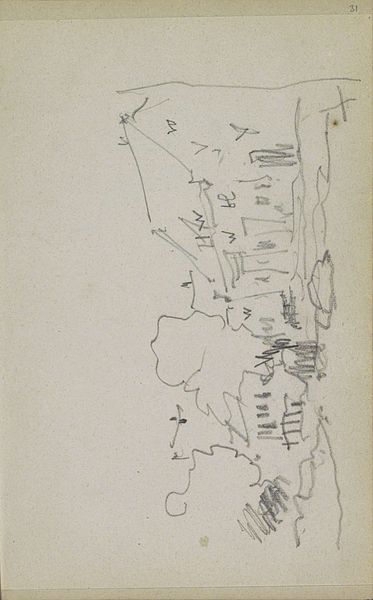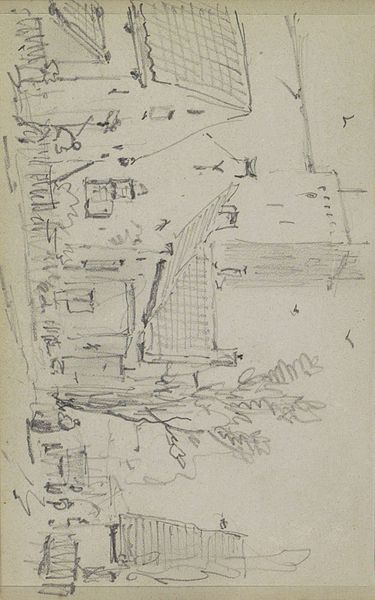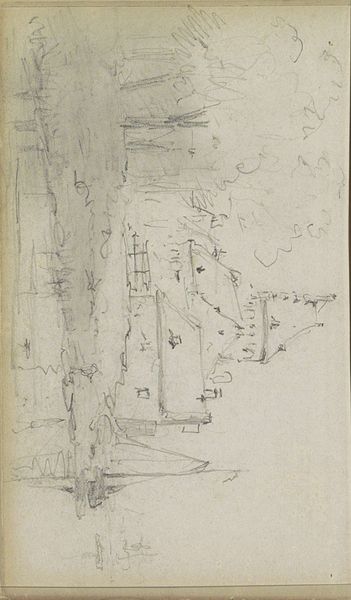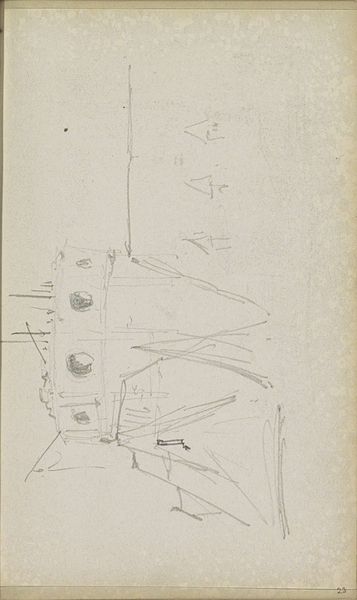
drawing, paper, pencil
#
drawing
#
landscape
#
paper
#
pencil
#
cityscape
#
realism
Copyright: Rijks Museum: Open Domain
Editor: Here we have Adrianus Eversen's pencil and paper drawing, "Zeilschip bij gebouwen", estimated between 1828 and 1897. It's a light, almost ghostly sketch of a cityscape with a sailing ship. What do you make of this work? Curator: Well, focusing on the materials, we see a readily available paper and pencil. It begs the question: Was this a quick study, a preliminary sketch before a larger work, or perhaps an artwork intended for a burgeoning middle-class art market that was starting to consume drawings and prints? Editor: That's interesting. I hadn't thought about the role of the market itself influencing the creation of the piece. So you see the pencil sketch, a relatively inexpensive medium, as tied to the expanding art market? Curator: Precisely! Consider the social context: increased urbanization in the Netherlands, rising merchant class wealth, and, consequently, new patterns of consumption. Eversen would have been keenly aware of these factors. Were these types of drawings a more accessible and affordable alternative to large-scale oil paintings? How might this have democratized art ownership and broadened the audience for art in the 19th century? Editor: That really shifts how I view it. It’s not just a sketch anymore but potentially part of a whole new economic system for art. So, analyzing the materiality offers a window into the labor and market forces? Curator: Exactly. The roughness of the sketch could be a virtue; it offers “authenticity”, perhaps even a hint of artistic genius caught in a moment of creation, for a customer seeking the appeal of "high art" at an affordable cost. The type of paper used and the pencil’s grade become significant when evaluating its position within artistic and economic contexts of the era. Editor: I never thought I would look at a pencil sketch with such an economic perspective! It shows that even something seemingly simple can reflect broader changes in society and production. Curator: It is precisely by looking at materials and means that we gain a new appreciation for the context of creation.
Comments
No comments
Be the first to comment and join the conversation on the ultimate creative platform.
